Oil Immersed Transformer Maintenance: Best Practices for Longevity?
Have you ever wondered why some transformers last for decades while others fail prematurely? The secret lies in proper maintenance. But what exactly does it take to keep an oil immersed transformer running smoothly for years?
Oil immersed transformer maintenance involves regular oil testing, component inspections, moisture control, and cooling system upkeep. These practices ensure optimal performance, prevent breakdowns, and extend the transformer’s lifespan. Proper maintenance can double a transformer’s operational life and significantly reduce lifecycle costs.
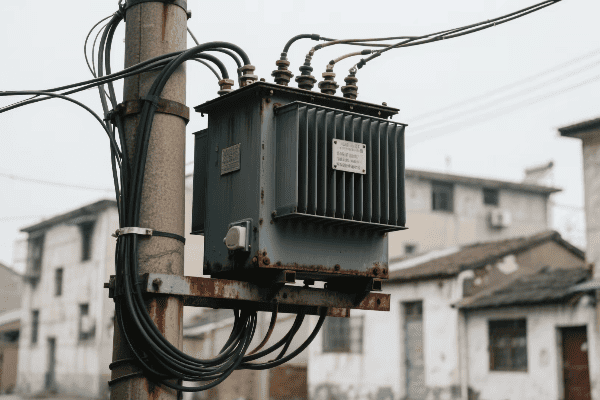
As someone who has worked with oil immersed transformers for years, I’ve seen firsthand how proper maintenance can make or break a transformer’s longevity. Let’s dive into the best practices that can keep these crucial components of our power infrastructure running smoothly for decades.
What Are the Essential Maintenance Procedures for Oil Immersed Transformer Components?
Imagine driving a car without ever changing the oil or checking the brakes. It wouldn’t last long, right? The same principle applies to transformers. But what specific maintenance procedures are essential for their components?
Essential maintenance procedures for oil immersed transformer components include regular oil testing, winding resistance measurements, bushing inspections, tap changer maintenance, and core grounding checks. These procedures help detect early signs of wear, prevent failures, and ensure optimal performance of all transformer components.
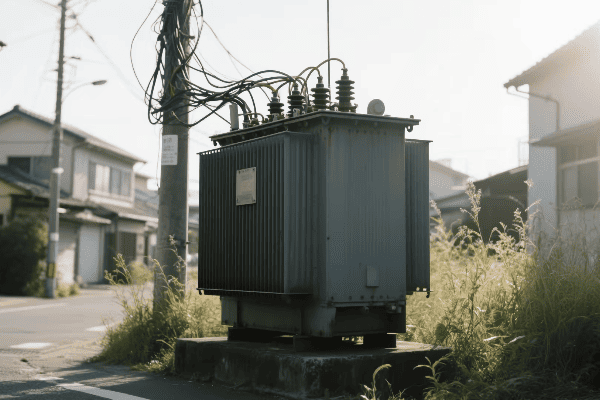
I remember a case where a client skipped routine bushing inspections. The result? A catastrophic failure that could have been easily prevented. Let’s break down these essential procedures to avoid such costly mistakes.
Oil Testing: The Lifeblood of Your Transformer
Oil in a transformer is more than just a coolant:
- Dielectric Strength Test: Ensures oil can withstand electrical stress.
- Dissolved Gas Analysis (DGA): Detects early signs of internal faults.
- Acidity Test: Measures oil degradation over time.
I once worked on a transformer that showed unusual gas levels in its DGA. By catching this early, we prevented a potential arcing issue that could have led to a major failure.
Winding Resistance Measurements: Detecting Hidden Issues
Regular winding checks are crucial:
- Resistance Measurement: Identifies any changes in winding condition.
- Turns Ratio Test: Ensures proper voltage transformation.
- Insulation Resistance Test: Checks the integrity of winding insulation.
| Test | Frequency | What It Detects |
|---|---|---|
| Resistance Measurement | Annually | Loose connections, short circuits |
| Turns Ratio Test | Every 2-3 years | Winding deformation, short circuits |
| Insulation Resistance | Annually | Insulation degradation, moisture ingress |
In a recent project, routine winding resistance tests revealed a slight imbalance. Further investigation uncovered a developing short circuit that we addressed before it caused any damage.
Bushing Inspections: The Critical Connection Points
Bushings are often overlooked but are critical:
- Visual Inspection: Check for cracks, oil leaks, or discoloration.
- Power Factor Testing: Assesses the bushing’s insulation quality.
- Oil Level Check: Ensures proper oil levels in oil-filled bushings.
I’ve seen transformers fail due to neglected bushings. In one case, a hairline crack in a bushing led to moisture ingress and eventually a flashover. Regular inspections could have easily prevented this.
Tap Changer Maintenance: Keeping Voltage Regulation Smooth
Tap changers require special attention:
- Contact Resistance Measurement: Ensures good electrical contact.
- Mechanical Operation Check: Verifies smooth tap changing.
- Oil Quality in Tap Changer Compartment: Often degrades faster than main tank oil.
During a routine maintenance, I discovered a tap changer with worn contacts. Replacing these before they failed prevented potential voltage regulation issues and extended the transformer’s life.
Core Grounding Checks: The Often Forgotten Element
Core grounding is crucial but often overlooked:
- Core Insulation Resistance Test: Checks for core-to-ground faults.
- Core Ground Connection Integrity: Ensures proper grounding.
- Magnetizing Current Test: Can indicate core problems.
In my early career, I encountered a transformer with an ungrounded core due to a loose connection. This led to circulating currents and increased losses. A simple grounding check could have caught this issue early.
These essential maintenance procedures form the backbone of a solid transformer maintenance program. By regularly performing these checks, you can catch potential issues before they become major problems, ensuring your transformer operates efficiently and reliably for decades. Remember, in the world of oil immersed transformers, prevention is always better (and cheaper) than cure.
How Does Regular Oil Quality Testing Contribute to Transformer Longevity?
Have you ever considered how the oil in a transformer is like the blood in our bodies? Just as a blood test can reveal our health status, oil testing can tell us volumes about a transformer’s condition. But how exactly does this contribute to a transformer’s long life?
Regular oil quality testing contributes significantly to transformer longevity by detecting early signs of degradation, identifying potential faults, and guiding maintenance decisions. It helps maintain optimal insulation properties, prevents accelerated aging, and ensures efficient heat dissipation, all of which are crucial for extending a transformer’s operational life.
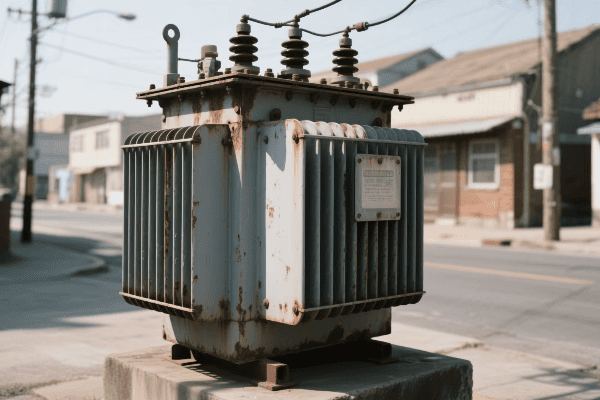
I’ve seen transformers fail prematurely due to neglected oil maintenance, and others last well beyond their expected lifespan thanks to diligent oil care. Let’s dive into why oil testing is so crucial.
Dissolved Gas Analysis (DGA): The Early Warning System
DGA is like a health check-up for your transformer:
- Fault Gas Detection: Identifies gases produced by electrical or thermal faults.
- Trend Analysis: Monitors gas generation rates over time.
- Fault Type Identification: Helps pinpoint the nature and location of potential issues.
I once worked on a transformer that showed a sudden increase in acetylene levels during a routine DGA. This early detection allowed us to identify and address an developing arc before it caused significant damage.
Dielectric Strength Testing: Ensuring Insulation Integrity
Dielectric strength is crucial for transformer operation:
- Breakdown Voltage Measurement: Indicates the oil’s ability to withstand electrical stress.
- Moisture Content Analysis: High moisture can significantly reduce dielectric strength.
- Particle Contamination Check: Particles can create paths for electrical discharge.
| Test | Acceptable Range | What It Indicates |
|---|---|---|
| Breakdown Voltage | >30 kV (for new oil) | Insulation capability |
| Moisture Content | <20 ppm | Risk of electrical discharge |
| Particle Count | <5 μm / ml | Contamination level |
In a recent project, we found a transformer with unusually low dielectric strength. Further investigation revealed moisture ingress through a faulty seal, which we were able to repair before any insulation damage occurred.
Acidity and Interfacial Tension Tests: Tracking Oil Degradation
These tests help monitor oil aging:
- Acidity (Neutralization Number): Indicates the level of acidic compounds in the oil.
- Interfacial Tension: Measures the oil’s ability to separate from water.
- Color and Appearance: Visual indicators of oil condition.
I remember a case where routine testing showed a rapid increase in acidity. This led us to discover a problem with the transformer’s sealing, allowing air to enter and accelerate oil oxidation.
Furan Analysis: Assessing Solid Insulation Health
Furan compounds indicate cellulose degradation:
- 2-FAL Measurement: The most common furan compound, indicates paper insulation breakdown.
- Degree of Polymerization Estimation: Helps assess the remaining life of paper insulation.
- Aging Rate Analysis: Tracks the rate of insulation degradation over time.
During a transformer life assessment, we used furan analysis to estimate the remaining life of a 30-year-old unit. This helped the client plan for replacement well in advance, avoiding unplanned outages.
Particle Count and Water Content: Maintaining Oil Purity
Clean, dry oil is essential for transformer health:
- Particle Count Analysis: Identifies contamination levels.
- Water Content Measurement: Crucial for maintaining dielectric strength.
- Oil Reconditioning Decisions: Guides when to filter, dry, or replace oil.
I once consulted on a project where high particle counts were causing accelerated wear in a transformer’s moving parts. Implementing a more rigorous filtration schedule significantly extended the transformer’s operational life.
Regular oil quality testing is not just a maintenance task; it’s a crucial strategy for extending transformer life. By providing insights into the transformer’s internal condition, oil testing allows for proactive maintenance, preventing minor issues from becoming major problems. It’s like giving your transformer regular health check-ups, ensuring it stays in top condition for decades. Remember, in the world of oil immersed transformers, what you can’t see can hurt you – and oil testing is your window into the transformer’s hidden health.
What Are the Best Practices for Monitoring and Maintaining Oil Levels in Transformers?
Have you ever tried to run a car engine low on oil? It’s a recipe for disaster. The same principle applies to transformers. But how do we ensure that these critical components always have the right amount of oil?
Best practices for monitoring and maintaining oil levels in transformers include regular visual inspections, using reliable level indicators, implementing automated monitoring systems, and establishing proper oil top-up procedures. These practices ensure optimal cooling, insulation, and protection of transformer components, contributing significantly to the transformer’s efficiency and longevity.
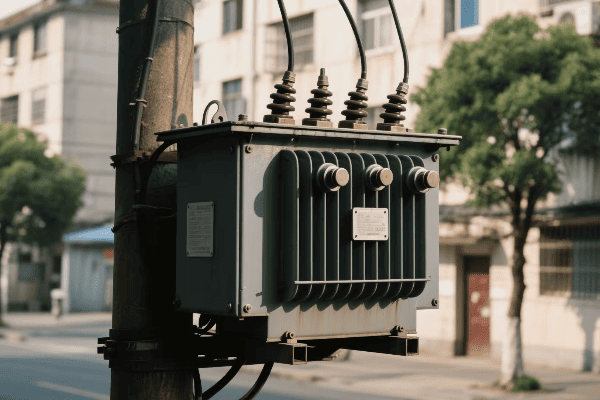
I’ve seen transformers fail due to something as simple as low oil levels. It’s a preventable issue that can have catastrophic consequences. Let’s explore the best ways to keep your transformer’s oil at the right level.
Visual Inspections: The First Line of Defense
Regular visual checks are crucial:
- Daily Checks: Quick visual inspections of oil level gauges.
- Weekly Detailed Inspections: Look for signs of leaks or oil discoloration.
- Monthly Comprehensive Checks: Include surrounding areas for signs of oil seepage.
I once worked with a client who implemented a rigorous visual inspection routine. Within a month, they caught a small oil leak that could have led to a major failure if left undetected.
Reliable Level Indicators: Choosing the Right Tools
Not all level indicators are created equal:
- Magnetic Level Gauges: Provide accurate readings and are easy to read from a distance.
- Sight Glasses: Allow direct visual confirmation of oil levels.
- Electronic Level Sensors: Offer remote monitoring capabilities.
| Indicator Type | Advantages | Best For |
|---|---|---|
| Magnetic Gauge | Accurate, visible from afar | Large transformers |
| Sight Glass | Direct visual confirmation | Smaller units, frequent checks |
| Electronic Sensor | Remote monitoring, alarms | Critical applications |
In a recent project, we upgraded a substation’s transformers with electronic level sensors. This allowed for real-time monitoring and immediate alerts for any oil level changes, significantly improving response times to potential issues.
Automated Monitoring Systems: The 24/7 Watchdog
Modern technology allows for constant vigilance:
- SCADA Integration: Connects oil level data to central monitoring systems.
- Alarm Systems: Set up alerts for low oil levels or sudden changes.
- Trend Analysis: Track oil level changes over time to predict future needs.
I implemented an automated monitoring system for a large utility company. Within the first year, it detected a gradual oil loss in a critical transformer, allowing for planned maintenance instead of an emergency shutdown.
Proper Oil Top-Up Procedures: Maintaining Quality
Adding oil isn’t as simple as it seems:
- Oil Quality Checks: Ensure new oil meets specifications before adding.
- Degassing Procedures: Remove air and moisture from oil before topping up.
- Temperature Considerations: Account for oil expansion at different temperatures.
During a routine maintenance visit, I noticed a technician about to top up a transformer with oil straight from a drum. We quickly intervened and implemented a proper procedure, including degassing and quality checks, preventing potential contamination issues.
Temperature Compensation: Accounting for Expansion
Oil levels change with temperature:
- Understanding Expansion Rates: Know how your oil expands with heat.
- Seasonal Adjustments: Be prepared for level changes in different seasons.
- Correct Interpretation: Don’t mistake thermal expansion for a leak or loss.
I once consulted on a case where a transformer was repeatedly overfilled in winter, leading to oil expansion and overflow in summer. Implementing temperature-compensated level monitoring solved the issue.
Leak Detection and Prevention: Proactive Measures
Preventing leaks is better than dealing with low oil levels:
- Regular Seal Inspections: Check gaskets and seals for signs of wear.
- Vibration Monitoring: Excessive vibration can lead to leaks over time.
- Pressure Tests: Periodically test the tank for leak-tightness.
In my early career, I learned the importance of leak prevention the hard way when a small, undetected leak led to a significant oil loss and transformer failure. Since then, I’ve always emphasized proactive leak detection in maintenance programs.
Monitoring and maintaining proper oil levels in transformers is a critical aspect of their care. It’s not just about keeping the oil topped up; it’s about ensuring the right amount of clean, high-quality oil is always present to do its job. By implementing these best practices, you’re not just maintaining oil levels – you’re protecting your transformer’s heart, ensuring it can perform efficiently and reliably for years to come. Remember, in the world of oil immersed transformers, the right oil level today means fewer problems tomorrow.
How Can Routine Inspections and Preventive Measures Extend Transformer Lifespan?
Have you ever wondered why some transformers last for decades while others fail prematurely? The secret often lies in the power of routine inspections and preventive measures. But how exactly do these practices contribute to a longer transformer life?
Routine inspections and preventive measures significantly extend transformer lifespan by identifying potential issues early, preventing minor problems from escalating, and maintaining optimal operating conditions. These practices include regular visual checks, electrical tests, thermal imaging, and proactive maintenance, all contributing to reduced wear, improved efficiency, and prolonged transformer life.
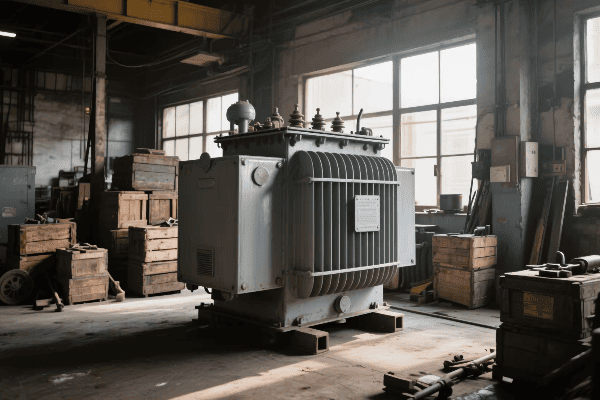
I’ve seen transformers outlive their expected lifespan by decades thanks to diligent inspection and maintenance routines. Let’s explore how these practices can keep your transformer healthy for years to come.
Visual Inspections: The Power of Observation
Never underestimate the value of a thorough visual check:
- External Condition: Look for signs of rust, damage, or oil leaks.
- Bushing Inspections: Check for cracks, contamination, or oil level issues.
- Gauges and Indicators: Ensure all are functioning and showing normal readings.
I once caught a developing bushing crack during a routine visual inspection. This early detection prevented a potential flashover that could have caused significant damage.
Electrical Testing: Probing the Invisible
Regular electrical tests reveal hidden issues:
- Insulation Resistance Tests: Check the condition of insulation.
- Power Factor Tests: Assess the overall condition of the transformer.
- Turns Ratio Tests: Verify the accuracy of voltage transformation.
| Test Type | Frequency | What It Reveals |
|---|---|---|
| Insulation Resistance | Annually | Insulation degradation |
| Power Factor | Every 2-3 years | Overall transformer health |
| Turns Ratio | Every 3-5 years | Winding condition |
During a routine power factor test, we once discovered a slight deviation that led us to uncover a developing inter-turn fault. Catching this early saved the client from a major failure down the line.
Thermal Imaging: Seeing the Heat
Infrared cameras can reveal hidden hotspots:
- Connection Points: Identify loose or high-resistance connections.
- Cooling System Efficiency: Check for blocked radiators or fan issues.
- Internal Fault Detection: Some internal issues manifest as external heat patterns.
I remember a case where thermal imaging revealed an overheating bushing connection that wasn’t detectable by other means. Addressing this prevented a potential failure and extended the transformer’s life.
Oil Analysis: The Transformer’s Blood Test
Regular oil testing is crucial:
- Dissolved Gas Analysis (DGA): Detect developing faults.
- Oil Quality Tests: Check for contamination and degradation.
- Furan Analysis: Assess solid insulation condition.
In my early career, I learned the importance of trend analysis in oil tests. By tracking changes over time, we were able to predict and prevent several potential failures before they occurred.
Cooling System Maintenance: Keeping It Cool
A well-maintained cooling system is vital:
- Radiator Cleaning: Ensure efficient heat dissipation.1. Radiator Cleaning: Ensure efficient heat dissipation.
- Fan and Pump Checks: Verify proper operation of forced cooling systems.
- Oil Flow Verification: Ensure oil is circulating effectively.
I once worked on a transformer that was running hot despite normal load. A thorough inspection revealed partially blocked radiator fins. After cleaning, the operating temperature dropped significantly, extending the transformer’s life.
Gasket and Seal Maintenance: Keeping It Tight
Preventing leaks is crucial for longevity:
- Regular Inspections: Check for signs of wear or degradation.
- Timely Replacements: Don’t wait for leaks to develop before replacing gaskets.
- Proper Tightening: Ensure all seals are correctly tightened during maintenance.
Early in my career, I learned the hard way how a small oil leak can lead to big problems. Now, I always emphasize the importance of proactive gasket maintenance to my clients.
Tap Changer Care: Smooth Voltage Regulation
Tap changers require special attention:
- Contact Resistance Measurements: Ensure good electrical connections.
- Mechanical Operation Checks: Verify smooth movement.
- Oil Quality in Tap Changer Compartment: Often degrades faster than main tank oil.
During a routine inspection, I once discovered a tap changer with worn contacts. Replacing these before they failed prevented potential voltage regulation issues and extended the transformer’s life.
Moisture Management: Keeping It Dry
Moisture is a transformer’s enemy:
- Regular Moisture Content Checks: Through oil tests and other methods.
- Breather Maintenance: Ensure desiccant is active and replaced as needed.
- Sealed Tank Integrity: Check and maintain seals to prevent moisture ingress.
I’ve seen transformers fail prematurely due to moisture contamination. Implementing a rigorous moisture management program can significantly extend a transformer’s lifespan.
Corrosion Prevention: Fighting the Rust
Protecting the transformer’s exterior is vital:
- Regular Painting: Maintain the protective coating on the tank and radiators.
- Cathodic Protection: For transformers in highly corrosive environments.
- Rust Spot Treatment: Address any rust spots immediately to prevent spreading.
In a coastal substation project, we implemented a comprehensive corrosion prevention program. Years later, those transformers still look and perform like new, despite the harsh salty environment.
Load Management: Avoiding Overload Stress
Proper loading extends transformer life:
- Monitor Loading Patterns: Understand typical and peak loads.
- Implement Load Management Strategies: Avoid prolonged overloads.
- Consider Cooling Upgrades: For transformers consistently running near capacity.
I once advised a client to upgrade their cooling system instead of replacing a transformer running near capacity. This cost-effective solution extended the transformer’s useful life by several years.
Routine inspections and preventive measures are not just maintenance tasks; they’re investments in your transformer’s future. By catching and addressing issues early, you prevent minor problems from becoming major failures. This proactive approach not only extends the transformer’s lifespan but also ensures more reliable operation and reduced lifecycle costs.
Throughout my career, I’ve seen transformers exceed their expected lifespans by 20 years or more, all thanks to diligent inspection and maintenance routines. Remember, in the world of oil immersed transformers, an ounce of prevention is worth a pound of cure. By implementing these practices, you’re not just maintaining a piece of equipment; you’re safeguarding a critical asset in your power system.
What Role Do Cooling Systems and Moisture Control Play in Oil Immersed Transformer Maintenance?
Have you ever wondered why some transformers seem to age faster than others? The answer often lies in two critical factors: cooling efficiency and moisture control. But why are these aspects so crucial for transformer longevity?
Cooling systems and moisture control play vital roles in oil immersed transformer maintenance by regulating operating temperatures and preventing insulation degradation. Efficient cooling systems ensure optimal performance and reduce thermal stress, while effective moisture control preserves insulation integrity and prevents oil degradation, both contributing significantly to extended transformer life.

In my years of working with transformers, I’ve seen how proper cooling and moisture management can make the difference between a transformer lasting 20 years or 40 years. Let’s dive into why these factors are so important and how to manage them effectively.
Cooling Systems: Keeping It Cool Under Pressure
Efficient cooling is essential for transformer longevity:
- Temperature Regulation: Prevents overheating and insulation breakdown.
- Load Capacity: Proper cooling allows transformers to handle higher loads.
- Efficiency Maintenance: Cooler operation means lower losses and higher efficiency.
I once worked on a project where upgrading the cooling system of an older transformer increased its load capacity by 20% and significantly extended its operational life.
Types of Cooling Systems
Different cooling methods suit various transformer sizes and applications:
- ONAN (Oil Natural Air Natural): For smaller transformers.
- ONAF (Oil Natural Air Forced): Uses fans to enhance cooling.
- OFAF (Oil Forced Air Forced): Pumps oil through radiators with forced air cooling.
- ODAF (Oil Directed Air Forced): Directs oil flow to hot spots.
| Cooling Type | Best For | Maintenance Needs |
|---|---|---|
| ONAN | Small, low-load transformers | Minimal, keep radiators clean |
| ONAF | Medium-sized transformers | Regular fan checks and cleaning |
| OFAF | Large power transformers | Pump and fan maintenance, oil flow checks |
| ODAF | Very large or overloaded units | Complex system checks, flow path verification |
In a recent substation upgrade, we switched from ONAN to ONAF cooling on several transformers. This simple change allowed them to handle increased loads due to growing demand without needing full replacement.
Cooling System Maintenance
Regular maintenance ensures optimal cooling:
- Radiator Cleaning: Remove dirt and debris for efficient heat dissipation.
- Fan and Pump Checks: Ensure all moving parts are functioning correctly.
- Oil Flow Verification: Check for blockages or restrictions in oil circulation.
I once troubleshot a transformer running unusually hot. The culprit? A partially blocked radiator. After a thorough cleaning, temperatures returned to normal, potentially adding years to the transformer’s life.
Moisture Control: The Silent Threat
Moisture is a transformer’s enemy:
- Insulation Degradation: Moisture accelerates the breakdown of paper insulation.
- Reduced Dielectric Strength: Water in oil decreases its insulating properties.
- Corrosion Risk: Moisture can lead to internal corrosion of transformer components.
Early in my career, I witnessed the devastating effects of moisture ingress in a poorly maintained transformer. The paper insulation had degraded so much that the transformer failed well before its expected lifespan.
Moisture Sources and Control Methods
Understanding moisture sources is key to controlling it:
- Atmospheric Moisture: Enters through breathers or leaks.
- Byproduct of Aging: Oil and paper degradation produces water.
- Residual Moisture: Left from manufacturing or maintenance processes.
Control methods include:
- Sealed Tank Designs: Prevent atmospheric moisture ingress.
- Dehydrating Breathers: Remove moisture from incoming air.
- Online Moisture Removal Systems: Continuously extract water from oil.
In a humid coastal environment, I implemented a comprehensive moisture control program for a substation. This included upgrading to sealed tank designs and installing advanced dehydrating breathers. The result? A significant reduction in moisture-related issues and extended transformer life.
Moisture Monitoring and Management
Regular monitoring is crucial:
- Oil Sampling: Regular tests for moisture content in oil.
- Dissolved Gas Analysis (DGA): Can indicate moisture-related issues.
- Online Moisture Sensors: Provide real-time data on moisture levels.
I once consulted on a case where routine oil tests showed gradually increasing moisture levels. By tracking this trend, we were able to identify and fix a faulty seal before any significant damage occurred.
The Interplay Between Cooling and Moisture
Cooling and moisture control are interrelated:
- Efficient Cooling Reduces Moisture: Lower temperatures slow down insulation aging and moisture production.
- Moisture Affects Cooling: Water in oil can reduce its heat transfer capabilities.
- Condensation Risk: Poor temperature control can lead to moisture condensation inside the transformer.
In a comprehensive transformer maintenance program I developed, we integrated cooling system checks with moisture monitoring. This holistic approach led to more effective maintenance and longer transformer life.
Cooling systems and moisture control are not just auxiliary concerns in transformer maintenance; they’re fundamental to ensuring long-term reliability and efficiency. Proper cooling prevents accelerated aging and allows transformers to operate at peak efficiency. Effective moisture control preserves the integrity of insulation and maintains the oil’s dielectric properties.
Throughout my career, I’ve seen transformers exceed their design life by decades, all thanks to diligent cooling management and moisture control. Remember, in the world of oil immersed transformers, keeping things cool and dry is the key to a long, productive life. By focusing on these aspects, you’re not just maintaining equipment; you’re ensuring the heart of your electrical system keeps beating strong for years to come.
Conclusion
Effective oil immersed transformer maintenance involves regular component checks, oil quality testing, proper oil level management, routine inspections, and efficient cooling and moisture control. These practices significantly extend transformer lifespan, ensure reliable operation, and optimize performance throughout the transformer’s operational life.
Free CHBEB Transformer Catalog Download
Get the full range of CHBEB transformers in one catalog.
Includes oil-immersed, dry-type, pad-mounted, and custom solutions.
Quick Message
Request A free quote
We'd like to work with you
- +86 15558785111
- [email protected]
- +86 15558785111
What We Do
CHINA BEI ER BIAN (CHBEB) GROUP, with 218 million in registered capital, originated from Beijing Beierbian Transformer Group. Headquartered in Beijing for R&D, it operates major production bases in Nanjing and Yueqing, producing high-quality products.
Latest Product
address
BeiJing
No 3,RongJing East Road,BeiJing Economic Technological Development Area,BeiJing,China
JiangSu
No 7️Xiangfeng Road,Jiangning,NanJing,JiangSu,China
WenZhou
No.211, Wei 16 Road, Industrial Zone, Yueqing, Wenzhou, Zhejiang, China.
XiangYang Industrial Zone ,YueQing,WenZhou,ZheJiang,China
contact us
- [email protected]
- +86 13057780111
- +86 13057780111
- +86 15558785111
Copyright © Bei Er Bian Group


